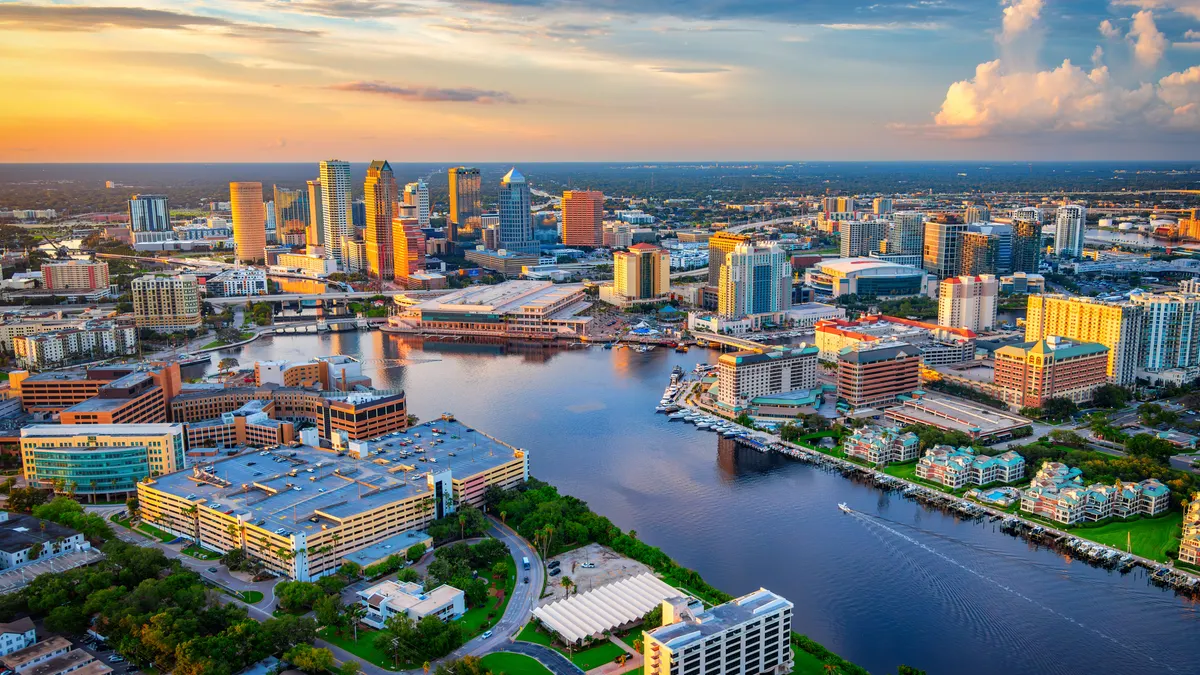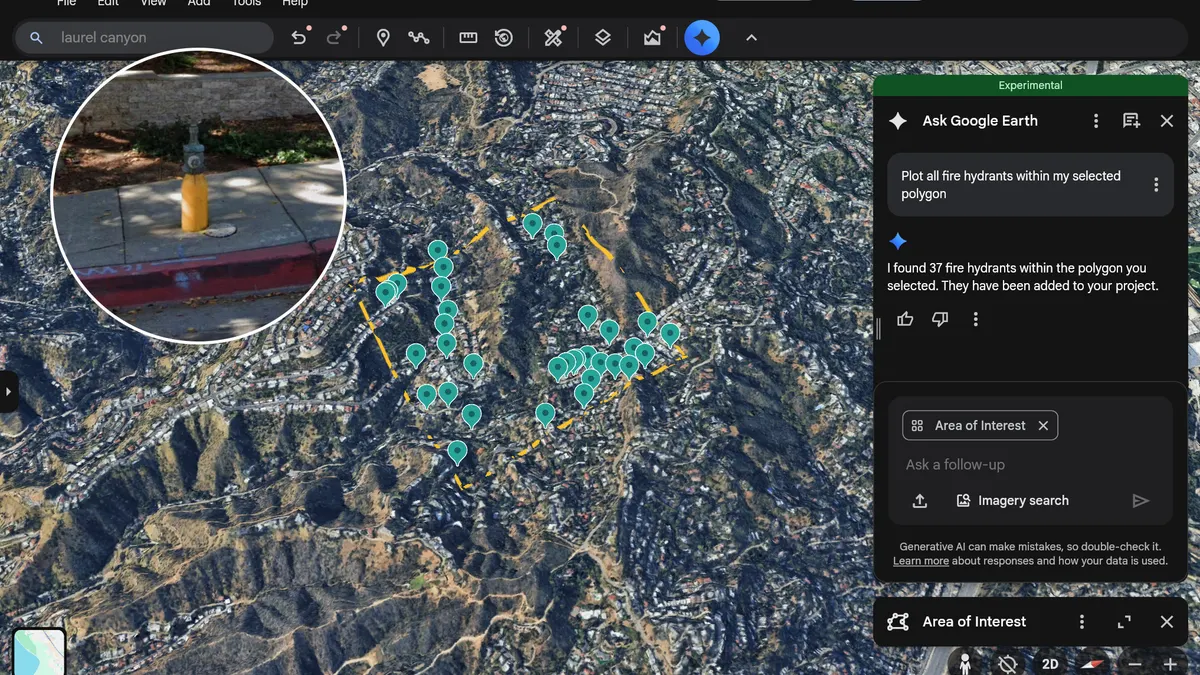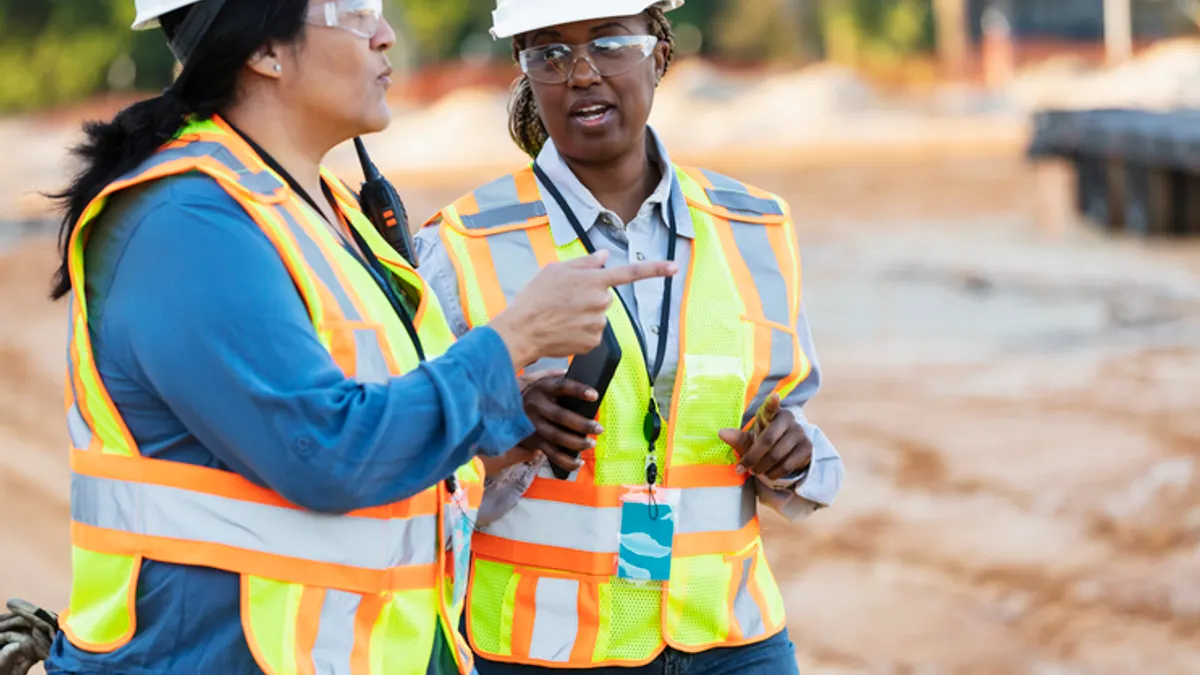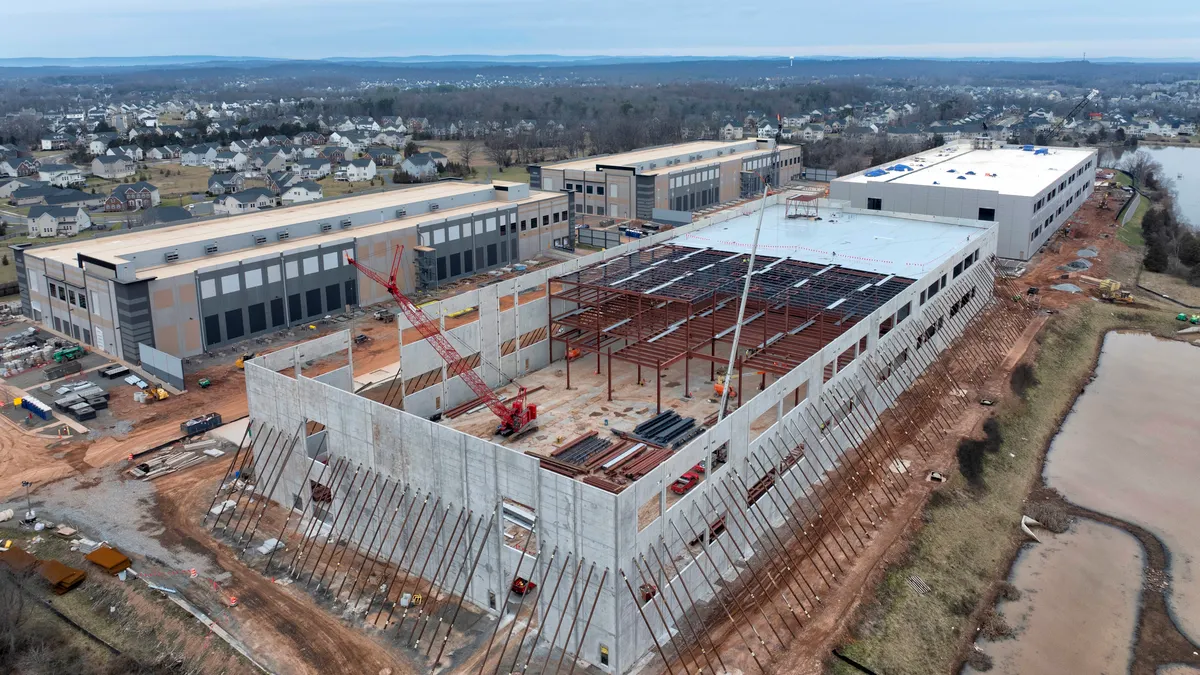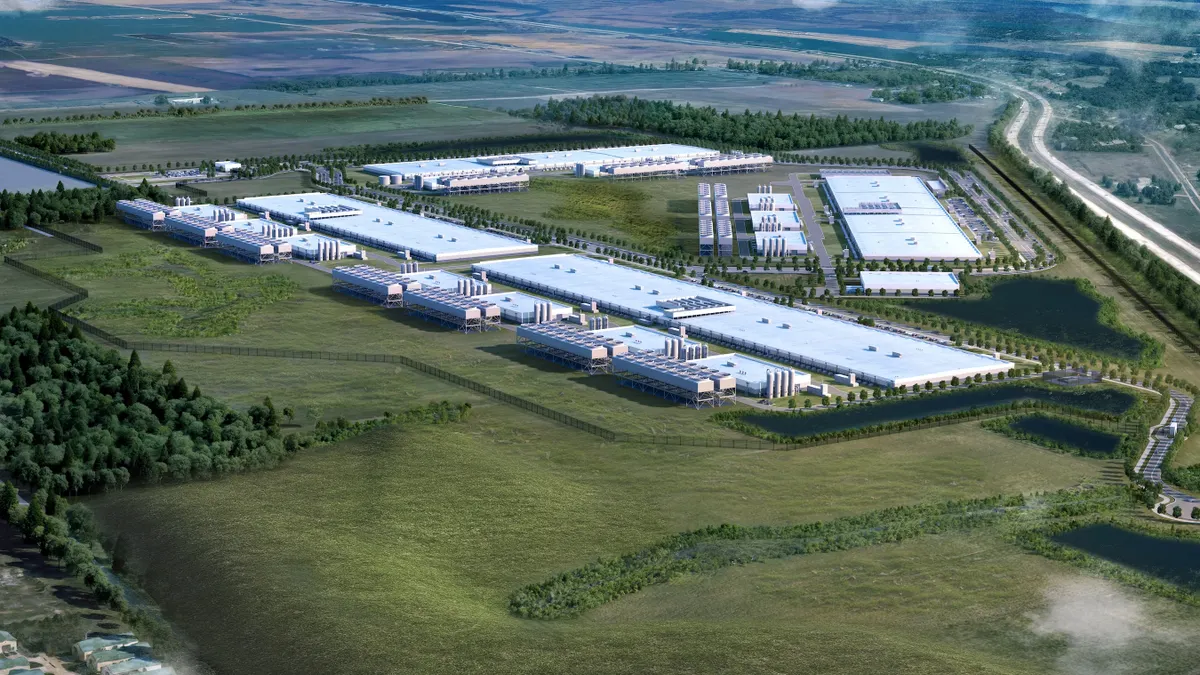Editor's note: This article is part of Construction Dive's 50 States of Construction series, in which we talk with industry leaders across the U.S. to discuss the business conditions in their market.
Millions of people passing by a job site each day. Tight quarters restricting access to equipment and materials. Project schedules lengthening amid booming demand. Opportunities arising to transform an iconic city skyline.
These are all realities of the New York construction market, according to Chris Pepey, a senior estimator with Turner Construction. New York–based Turner is one of the nation's largest contractors and, while it performs work throughout the state, it is best known for its New York City presence.
Throughout Pepey's 20-year career with Turner, he has seen the market and the company evolve to adapt to new labor conditions, project delivery methods and technologies. Construction Dive spoke with Pepey about how the New York market is unique, and what he predicts for the coming years.
Editor's note: This interview has been edited and condensed.
How would you describe construction demand in New York right now?
PEPEY: In New York City, it’s high. Across every market sector we see, it seems to be continued growth from the last couple years. It’s been growing and growing. There are a lot of megajobs out there, and I foresee the next several years continuing to grow.
Why is demand so strong?
PEPEY: After the market fall in 2008 and 2009, there was a lot of freeze-up, and now there’s availability of funds. The economy is getting stronger, and clients have a need for growing their businesses. Hospitals have a need for continued growth, schools, infrastructure, like airports. We’re seeing the market open up in a lot of those sectors.
What are some of the biggest challenges to operating in New York City?
PEPEY: Complicated site logistics. There are millions of people passing through every day — working, living, visiting. Keeping them protected and safe is difficult in and around a heavy metropolitan area such as New York.
The market’s tremendously busy, and that creates obstacles and difficulties, and we have to plan ahead and work with the subcontractor environment in the market to ensure we can perform these projects in the future. Limited labor is also something we see. It’s a growing problem; we’re always seeking skilled labor both in the trades and in project management.
Do you think the labor shortage will ease anytime soon?
PEPEY: There’s a lack of availability in the younger generation coming into the industry, so that’s a little problematic. We’re trying to make our environments more enticing to the trades and to attract younger generations. We’re hopeful that it’s going to improve, but I expect challenges moving forward.
What is Turner doing specifically to attract those workers?
PEPEY: Turner has initiatives like Build LIFE, which is Live Injury Free Every day. The new approach to construction is much different than I’ve seen in the past. It deals with the issues that construction people bring up every day that used to be ignored. It humanizes the construction industry. For example, something like clean bathrooms. It’s a huge thing. It might seem simple, but it's something that we’re trying to improve. It’s a much more collaborative, open environment.
Is Turner a union or open-shop contractor in New York?
PEPEY: The majority of projects is union, but we explore different opportunities as they come up with clients.
Do you see that shifting in New York, with more of a nonunion presence emerging?
PEPEY: It’s always been out there. It’s definitely in the markets. Clients come to us with different desires. Union, nonunion, open-shop, prevailing wage. We try to mold ourselves and provide the services to the clients that they need. I do see it growing, but it’s always been there.
Switching gears to project delivery, how is Turner using design-build and other alternative methods?
PEPEY: Design-build is an up-and-coming sector of the market for us. A couple years ago, we started the Turner Engineering Group, which is the design-build sector of Turner. Jacob K. Javits Center is a project we just acquired with Lendlease. That’s a big win for that group. There’s more coming, and we’re excited about the new opportunities in the design-build world.
Integrated Project Delivery is another one. IPD-light is kind of a facet of that, where you use some factors of it but not necessarily fully. It depends on what the owner is looking for. That is a very collaborative environment. Everybody’s involved — owners, design teams, architects, contractors. It’s a collaborative onsite environment. The design is put together as a group, rather than a designer handing over the design to us and we just build it. It allows for better constructability, safety and opportunities for modular.
Modular is something that we’ve been seeing as a growing trend in buildings such as B2 [461 Dean] from Forest City Ratner, where we built a residential tower modularly, and also the Rockefeller University River Building building over the Franklin D. Roosevelt East River Drive. It’s a 900-linear-foot building, almost like a high-rise on its side, sitting over the FDR. There were tremendous complications with safety and labor availability.
We built it in sections over in New Jersey, which opened up our labor force and allowed us to build in a controlled environment rather than over the FDR. We built the modules at the building, put them on a barge, shipped them over and erected them in the middle of the night over the FDR. It sounds very simple, but it was 16 sections and was built over the course of the summer. We did three months' worth of erection. It probably would’ve taken us over a year to do that same work in a much more dangerous and difficult scenario over the very active FDR, which sees millions of cars a day.
Do you expect modular to be incorporated with more projects in the future?
PEPEY: Definitely. We’ve done jobs where it might not be a modular building, but instead with pods, which maybe are just the bathrooms. We might manufacture those in a warehouse, they get shipped out to the site and dropped into the building. It makes for much quicker connections, it helps schedule, and you’re working in a controlled environment — which is attractive to the labor force. It could be in New Jersey, in New York, it could be anywhere, so [modular] helps. So yes, in terms of complete buildings, but even more so pieces of buildings, like prefabricated racks for electrical conduits. There’s definite benefits to modular, and we see growth in that.
Going back to the topic of design-build: There have been reports that New York is slow to adopt the design-build delivery method. Have you seen that occurring?
PEPEY: [Design-build] is a growing trend. Five years ago, it was few and far between. Today, the opportunities are growing. I think it might be a comfort thing, where people might need to see it happen in practice and in execution, and once that happens, you’ll start to see it become more prevalent in the market.
Do you expect the public sector to embrace design-build going forward?
PEPEY: I don’t think design-build is necessarily new to the industry. For instance, in other states, it’s probably been around for a while. New York is just slower to use that type of project, and it’s growing here. Maybe people are more comfortable around the U.S., and now it’s coming to New York and just getting to us.
How do projects differ when you have public sector clients as compared to private sector clients?
PEPEY: We approach them similarly. We have guidelines and restrictions and policies in place. On a lot of our projects, it’s the same. In the private sector, things flow easier with money and budgets. Whereas in the public sector, it could be a little slower, the process is a little longer.
Are there any other factors of the New York market that are unique to the area?
PEPEY: The difficulties of working in New York. I’m sure other cities see similar type challenges, but I know our busy market, our complicated site logistics, our limited labor availability. The market is so busy right now in certain sectors like steel and concrete, we talk to contractors a year or a year and a half in advance to book a spot. We have to acclimate to that. We’re big planners, so we’re always planning far out. Now we’re in a market that’s so busy we have to plan even further out. That’s what we have to do to secure the trades and the contractors to put the work in place.
Do you expect the New York construction market to slow down anytime soon?
PEPEY: I like to be an optimist rather than a pessimist. I would say the next two to three years are pretty solid. We have backlog, we have work ahead. After that mark, it’s a guess. Speaking for the next couple years, we’re busy now, the market’s busy now, and I don’t see New York City slowing down.






